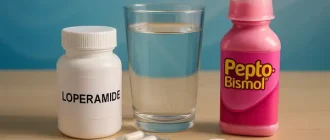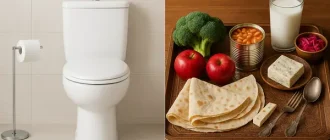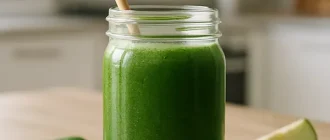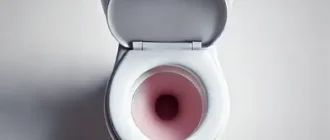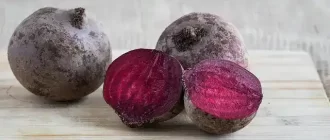Light-colored stools, especially when occurring over an extended period, can be a sign that something isn’t quite right with your digestive system. While occasional changes in stool color are common and often harmless, persistent pale or clay-colored stools could indicate underlying health conditions that warrant attention.
What Causes Light-Colored Stools?
The color of your stool is largely determined by bile, a digestive fluid produced by the liver and stored in the gallbladder. Bile is responsible for breaking down fats and giving stool its typical brown color. When bile flow is interrupted or reduced, stool may become light-colored. Here are some common causes of light-colored stools:
| Cause | Description |
|---|---|
| Biliary Obstruction | Blockage in the bile ducts, such as gallstones. |
| Liver Disorders | Conditions like hepatitis or cirrhosis can reduce bile production. |
| Pancreatic Disorders | Pancreatic issues can affect bile flow, causing pale stools. |
| Medications | Certain medications, like antacids and antibiotics, may lead to lighter stools. |
Liver and Bile Duct Health
When light-colored stools occur persistently, it is often linked to bile duct or liver issues. Conditions like hepatitis, biliary cirrhosis, or even gallstones can reduce bile flow, causing stool to lose its typical color. In some cases, light-colored stools can be an early indicator of a bile duct obstruction, which is a serious medical condition requiring prompt attention.
- Did you know? Gallstones are one of the most common causes of bile duct obstruction, affecting approximately 15% of adults over the age of 50, according to the American Gastroenterological Association.
Medical Situations and Practical Examples
A 42-year-old male patient reported consistent pale stools over a period of two months. Further examination revealed the presence of gallstones that were partially blocking the bile duct. The patient underwent a procedure called endoscopic retrograde cholangiopancreatography (ERCP) to remove the blockage, which successfully restored normal stool color.
In another case, a 55-year-old woman experienced light-colored stools accompanied by fatigue and yellowing of the skin. These symptoms led to a diagnosis of hepatitis, underscoring the importance of addressing persistent stool color changes with a healthcare professional.
When to Be Concerned About Light-Colored Stools
Persistent light-colored stools should not be ignored, especially if accompanied by other symptoms such as:
- Yellowing of the Skin or Eyes (Jaundice): Indicates a liver issue.
- Abdominal Pain: Could signal a bile duct or pancreatic problem.
- Fatigue or Nausea: May indicate systemic liver issues.
If any of these symptoms accompany pale stools, it’s crucial to seek medical evaluation. Early diagnosis can be critical for successful treatment, especially for conditions like bile duct obstruction or hepatitis.
The Role of Diet
Diet can also play a role in stool color, but dietary causes of light-colored stools are usually temporary. Low-fat diets or diets lacking in nutrient-rich foods may cause a temporary change in stool color. However, if the color change persists, it is less likely related to diet alone and may signal an underlying health issue.
| Common Dietary Factors | Effect on Stool Color |
|---|---|
| High Fat Intake | Promotes bile release, usually leading to darker stools. |
| Low Fat or Fat-Free Diet | Can result in lighter stools due to less bile production. |
| Certain Foods | Large amounts of dairy may lighten stool color. |
- Did you know? A low-fat diet that lacks enough healthy fats can reduce bile stimulation, sometimes leading to paler stools. It is recommended to include a moderate amount of healthy fats in your diet, such as those from avocados and nuts, to maintain digestive health.
Diagnostic Approaches
If light-colored stools persist, healthcare professionals may recommend a series of diagnostic tests to determine the cause. These tests could include:
- Blood Tests: To check liver function and detect inflammation.
- Imaging Tests: Ultrasound or MRI to view the liver, bile ducts, and pancreas.
- Endoscopic Tests: Procedures like ERCP may be used to investigate bile duct blockages.
The cost of these diagnostic procedures can vary:
| Diagnostic Test | Average Cost (USD) |
|---|---|
| Blood Tests | $100 – $200 |
| Ultrasound | $300 – $600 |
| MRI | $1,000 – $3,500 |
| ERCP Procedure | $2,500 – $6,000 |
Modern Trends in Liver Health Awareness
In recent years, there has been an increased focus on liver health, with more people getting proactive about monitoring liver enzymes and bile duct health. Sales of home liver function tests have increased by 20% over the last two years as people become more conscious of liver wellness. These at-home kits can provide some initial insights, but it is important to follow up with a healthcare professional for a complete evaluation.
Advice from Our Editorial Team
If you notice persistent light-colored stools, it’s important not to ignore it. While diet can sometimes play a role, consistent changes often signal an underlying medical issue. Early diagnosis can make a significant difference in outcomes, particularly for liver or bile duct-related conditions. Consult with your healthcare provider if symptoms persist, especially if accompanied by jaundice or abdominal pain. Remember, proactive health monitoring and timely intervention can significantly improve your overall digestive health.
About the Author
Reyus Mammadli is the author of this health blog since 2008. With a background in medical and biotechnical devices, he has over 15 years of experience working with medical literature and expert guidelines from WHO, CDC, Mayo Clinic, and others. His goal is to present clear, accurate health information for everyday readers — not as a substitute for medical advice.



